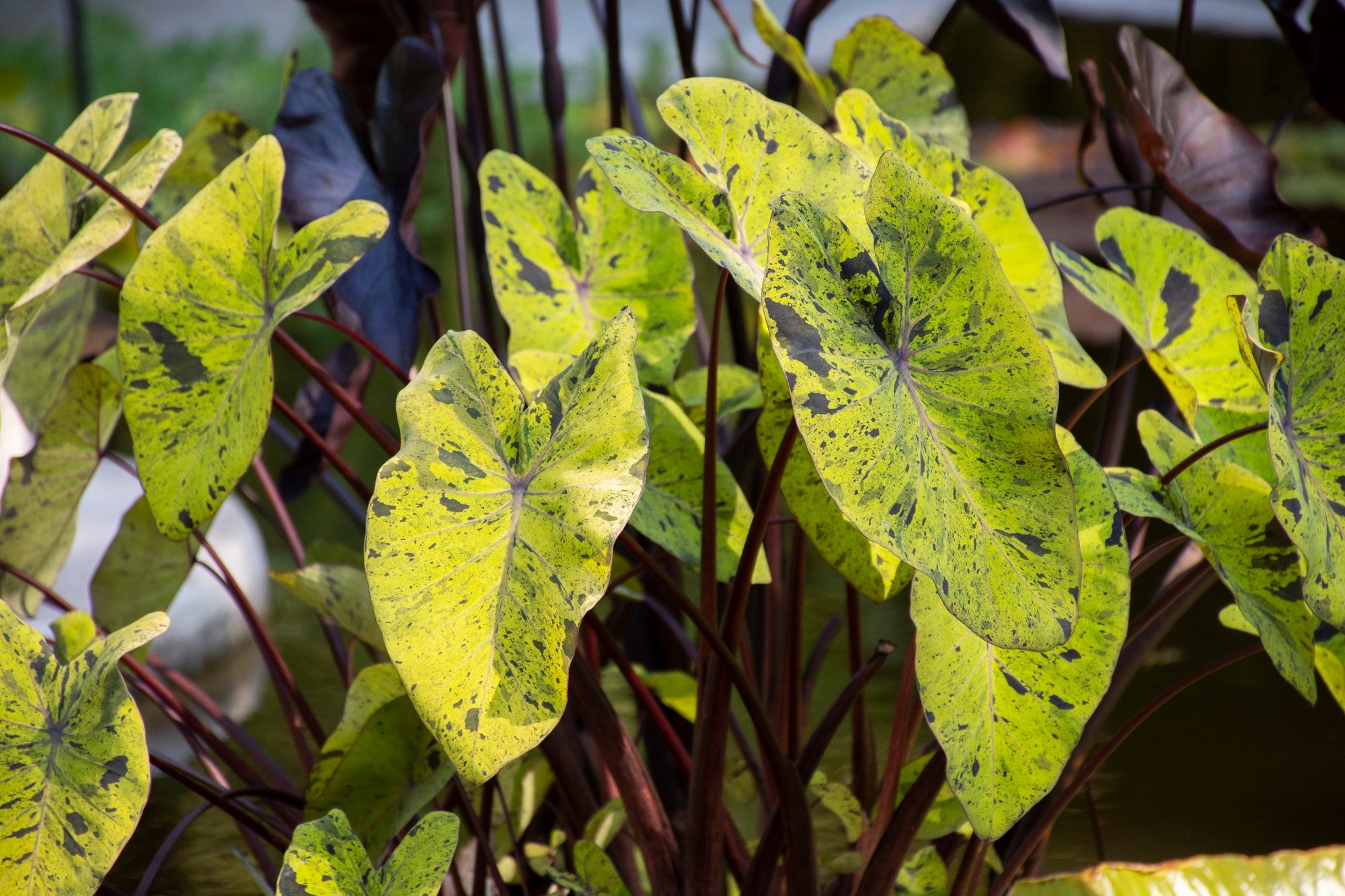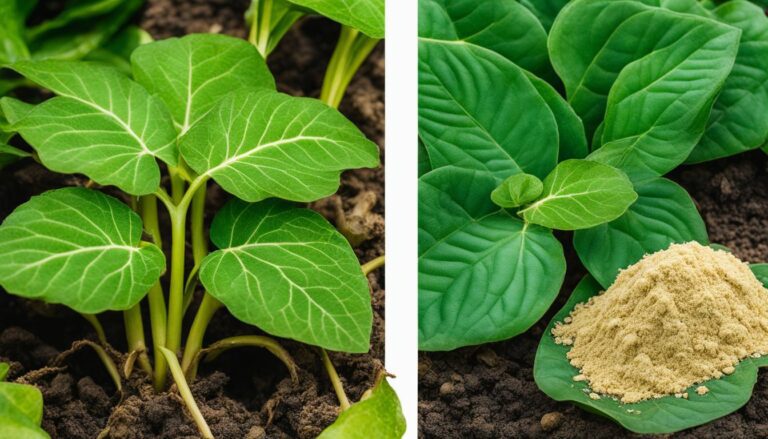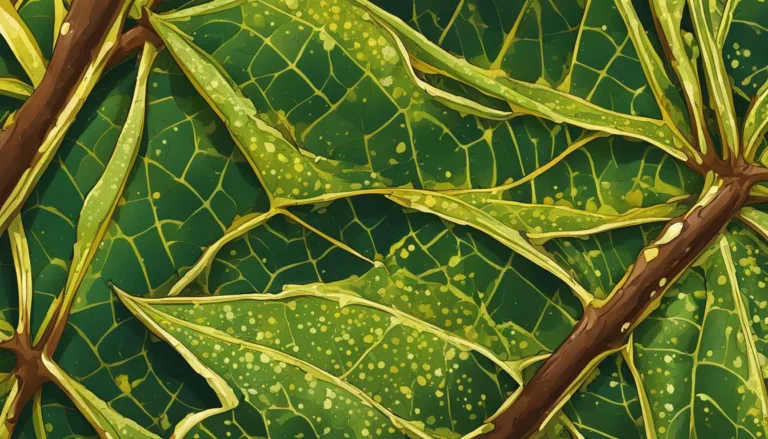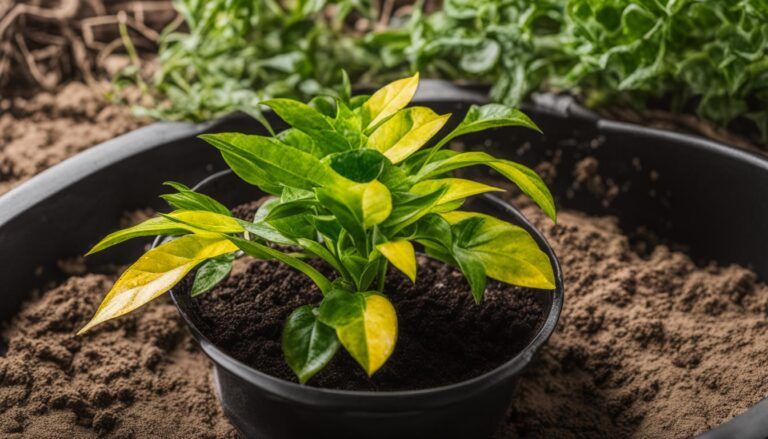
As a passionate gardener, I understand the importance of providing the best care for plants. One common issue that can hinder their growth and overall health is potassium deficiency.
It is crucial to be able to identify the symptoms of potassium deficiency in order to address and treat it effectively. By recognizing these signs, you can take the necessary steps to ensure the optimal growth and vitality of your plants.
Key Takeaways:
- Yellow or orangish flecks or spots on older leaves
- Yellowing between veins
- Brown edges on leaves
- Chlorosis (yellowing) of leaf tissue
- Slow growth, increased susceptibility to diseases, poor crop yield, and overall poor health
Common Causes and Effects of Potassium Deficiency in Plants
Potassium deficiency can have a significant impact on the health and growth of plants. Understanding the causes and effects of this deficiency is crucial for effective plant care. Several factors can lead to potassium deficiency in plants, with soil composition being a common culprit.
Light sandy soils, in particular, are prone to washing away essential nutrients like potassium due to their loose structure. Additionally, incorrect pH levels in the soil can render potassium unavailable for plant uptake.
Another factor that contributes to potassium deficiency is the presence of excess salts, calcium, or magnesium in the soil. These elements can inhibit the absorption of potassium by plants, further exacerbating the deficiency.
It is essential to note that different plants may have varying sensitivities to potassium deficiency, so it is crucial to monitor the specific symptoms exhibited by each plant species.
Table: Causes and Effects of Potassium Deficiency in Plants
| Causes | Effects |
|---|---|
| Soil composition (light sandy soils) | Yellow or orangish flecks or spots on older leaves |
| Incorrect pH levels | Yellowing between veins |
| Excess salts, calcium, or magnesium | Brown edges on leaves |
| Chlorosis (yellowing) of leaf tissue |
The effects of potassium deficiency can be detrimental to overall plant health. In addition to the physical symptoms mentioned above, plants experiencing potassium deficiency may also suffer from slow growth, increased vulnerability to diseases, poor crop yield, and overall diminished vigor.
By understanding the causes and effects of potassium deficiency, gardeners can take proactive measures to mitigate these issues and promote optimal plant growth.
Identifying and Diagnosing Potassium Deficiency in Plants
Diagnosing potassium deficiency in plants is crucial for addressing the issue and promoting optimal growth. By recognizing the specific symptoms associated with low potassium levels, gardeners can take appropriate measures to rectify the deficiency.
Some common symptoms to look out for include yellow or orangish flecks or spots on older leaves, yellowing between veins, brown edges on leaves, and chlorosis (yellowing) of leaf tissue. It’s important to note that these symptoms may vary depending on the plant species.
When diagnosing potassium deficiency, a visual inspection of the plants can provide valuable clues. Examining the leaves for the characteristic discolorations and deformities can help determine if the plants are lacking potassium.
Conducting soil tests can provide further insights into the nutrient levels and pH balance, which may contribute to potassium deficiency.
Another technique to diagnose potassium deficiency is through tissue testing. Plant tissue analysis involves collecting plant samples and sending them to a laboratory for analysis.
This method provides a precise measurement of nutrient levels in the plant, including potassium. By comparing the results with optimal nutrient ranges, gardeners can confirm the presence of potassium deficiency and make informed decisions regarding fertilization.
Differentiating Potassium Deficiency from Other Plant Disorders
It’s important to differentiate potassium deficiency from other plant disorders that may exhibit similar symptoms. For example, magnesium deficiency and certain diseases can cause yellowing of leaves and appear similar to potassium deficiency.
By considering the specific symptoms and conducting further tests, such as soil analysis or consultation with agricultural experts, gardeners can accurately diagnose potassium deficiency and address it appropriately.
Effective treatments for potassium deficiency in plants
To effectively treat potassium deficiency in plants, there are several recommended approaches. One method is to spread organic mulch beneath the plants, which can help conserve moisture and improve nutrient availability.
Mulching not only helps retain moisture in the soil but also acts as a slow-release source of potassium. This can provide a steady supply of the nutrient to the plants over time and promote healthy growth.
Another effective treatment for potassium deficiency is the application of potassium fertilizer. There are various forms of potassium fertilizers available, but it is important to choose a slow-release option to avoid leaching.
Slow-release fertilizers, such as potassium silicate, sulfur-coated potassium products, or polymer-coated potassium, are preferred as they release nutrients gradually, allowing plants to absorb them more efficiently.
It is important to note that certain potassium fertilizers should be avoided in specific situations. For example, potassium chloride should be avoided if there are issues with chlorine or salt toxicity.
Readily leached materials like potassium nitrate and potassium sulfate should be avoided, especially in sandy soils. By selecting the appropriate potassium fertilizer and considering the specific requirements of the plants and soil conditions, gardeners can effectively treat potassium deficiency and support the overall health and development of their plants.
| Potassium Fertilizer | Advantages | Considerations |
|---|---|---|
| Potassium silicate | – Slow-release – Improves plant resilience – Enhances disease resistance | – May increase pH levels in acidic soils – Requires proper application rate |
| Sulfur-coated potassium products | – Slow-release – Minimizes nutrient leaching – Suitable for sandy soils | – May release sulfur as well – Temperature-dependent release |
| Polymer-coated potassium | – Controlled release of nutrients – Long-lasting effects – Reduces fertilizer application frequency | – Expensive compared to other options – Requires proper timing and application |
Preventing and Maintaining Optimal Potassium Levels in Plants
As a gardener, I know that prevention is always better than cure when it comes to potassium deficiency in plants. To ensure your plants stay healthy and avoid potassium deficiency, there are a few key steps you can take.
First and foremost, it’s crucial to provide your plants with sufficient nutrients. Regularly monitor the nutrient levels in your soil and adjust them as necessary. This can be done through reliable fertilization, ensuring that your plants have access to the potassium they need.
Another important factor to consider is the pH level of your soil. Maintaining the optimal pH range for nutrient availability is essential for preventing potassium deficiency.
Regularly test the pH of your soil and make adjustments if needed to ensure that potassium and other nutrients are readily available for uptake by your plants.
In addition to monitoring nutrient levels and pH, it’s also important to pay attention to fundamental parameters of plant health such as electrical conductivity (EC) and temperature of the root zone.
By keeping these factors in check, you can create an environment that promotes optimal nutrient uptake, including potassium.
FAQ
What are the symptoms of potassium deficiency in plants?
The symptoms of potassium deficiency in plants include yellow or orangish flecks or spots on older leaves, yellowing between veins, brown edges on leaves, and chlorosis (yellowing) of leaf tissue.
What are the common causes and effects of potassium deficiency in plants?
Potassium deficiency in plants can occur due to soil composition, such as light sandy soils where nutrients can be easily washed away. Incorrect pH levels, an excess of salts, calcium, or magnesium in the soil can also contribute to potassium deficiency. The effects of potassium deficiency include slow growth, increased susceptibility to diseases, poor crop yield, and overall poor health.
How can I identify and diagnose potassium deficiency in plants?
To identify and diagnose potassium deficiency in plants, look for symptoms such as yellow or orangish flecks or spots on older leaves, yellowing between veins, brown edges on leaves, and chlorosis (yellowing) of leaf tissue. Keep in mind that specific symptoms may vary depending on the plant species.
What are effective treatments for potassium deficiency in plants?
To treat potassium deficiency in plants, you can spread organic mulch beneath the plants to improve nutrient availability. Applying potassium fertilizer, specifically slow-release forms like potassium silicate or sulfur- or polymer-coated products, is also effective. Avoid materials like potassium nitrate and potassium sulfate, especially in sandy soils, and be cautious with potassium chloride if there are issues with chlorine or salt toxicity.
How can I prevent and maintain optimal potassium levels in plants?
To prevent potassium deficiency, ensure plants are provided with sufficient nutrients and that these nutrients are readily available for uptake. Monitor and adjust fundamental parameters of plant health, such as pH levels, electrical conductivity (EC), and temperature of the root zone. Maintain the optimal pH range for nutrient availability and provide adequate nutrients through reliable fertilization to help prevent potassium deficiency in plants.






